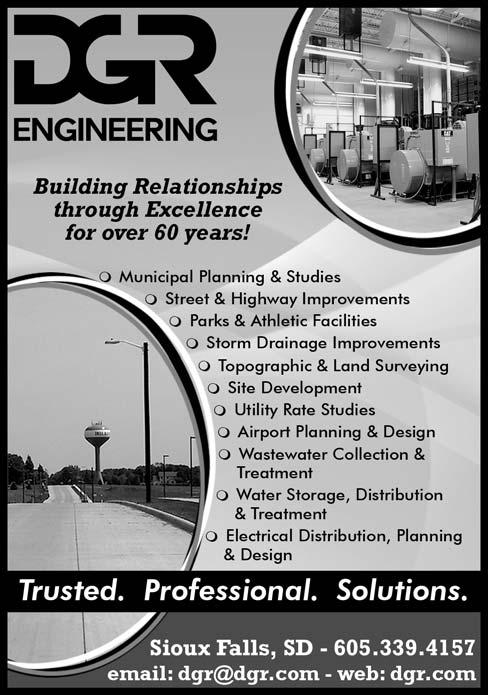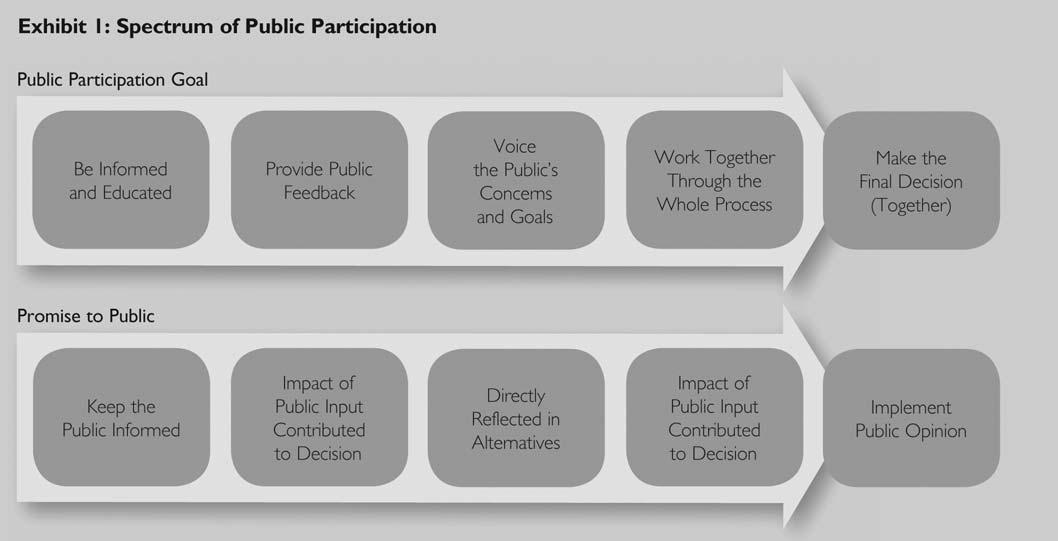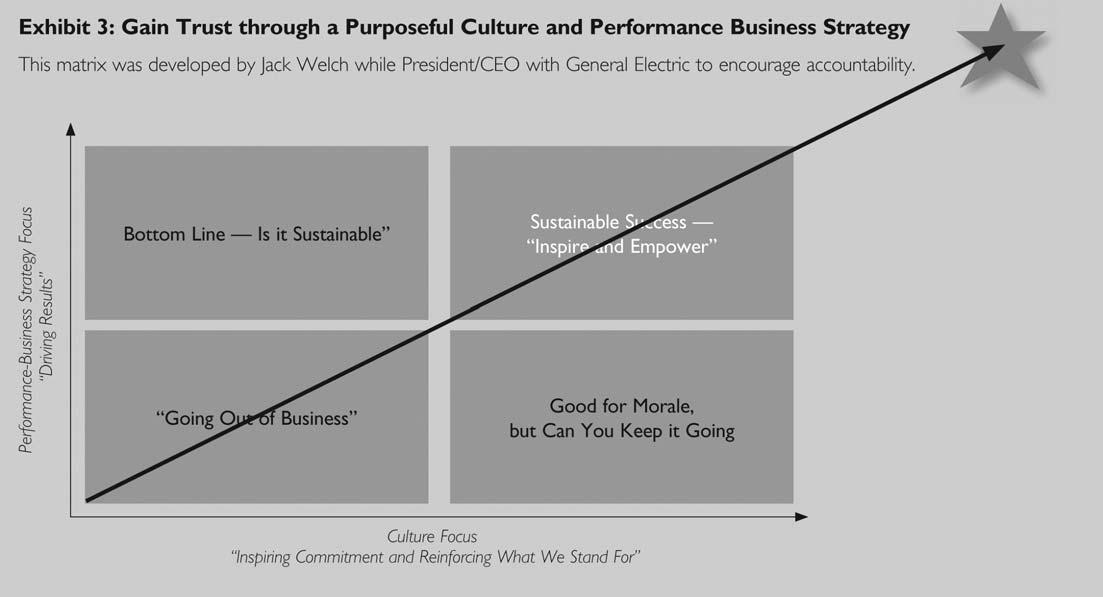
11 minute read
Making Strategic Planning Work
Strategic Planning: A Basic Framework
By Brent Stockwell
Advertisement
Strategic planning is, at its core, a tool governments can use to determine where they are, where they want to be, and how to get there. It is the key to achieving and maintaining a successful, high-performing organization. Jurisdictions that neglect strategic planning risk ending up miles away from their intended destinations, the result of reacting instead of planning.
Strategic planning is about results – but the act of planning alone has value. The distinction is important because things rarely turn out as expected. Strategic planning requires practitioners to systematically think through what might be done and how goals might be achieved. The insight gained from this process helps ensure success for the organization’s strategies, even when circumstances intervene and plans go awry.
In many organizations, strategic plans basically translate into wishful thinking. This is due to two common mistakes: 1) not integrating objective data into the planning process, and 2) failing to think strategically about how the plan will be implemented.
The Government Finance Officers Association’s best practice on strategic planning, Establishment of Strategic Plans (available at www.gfoa.org) defines strategic planning as “a comprehensive and systematic management tool designed to help organizations assess the current environment, anticipate and respond appropriately to changes in the environment, envision the future, increase effectiveness, develop commitment to the organization’s mission, and achieve consensus on strategies and objectives for achieving that mission.”
In other words, strategic planning is about influencing the future rather than simply preparing or adapting to it. The focus is on aligning organizational resources to bridge the gap between present conditions and the envisioned future.
Putting It into Practice
Initiate the Process the Right Way. Without the support of the organization’s chief executive, a strategic plan has
little chance of influencing an organization or attaining the resources necessary to accomplish strategic goals. The governing body should initiate an organization-wide plan, and plans for individual departments or units should be developed with the support of the highest level of management responsible for the area. A staff member or key team should also be identified to manage the process.
Prepare a Short, Sharply Focused Mission Statement.
The mission statement should be a broad but clear statement of purpose for the entire organization. Mission statements help officials decide what the organization should do and, just as important, what it should not do. Because the organization’s goals, strategies, programs, and activities should logically cascade from the mission statement, it sometimes winds up bloated and imprecise, trying to include anyone and anything. To be effective, however, a mission statement must be short and sharply focused.
Look Inside and Out. Thoroughly analyze the government’s internal and external environment. Many organizations perform a SWOT analysis (assessing strengths, weaknesses, opportunities, and threats). Strengths and weaknesses relate to the internal environment, while the analysis of opportunities and threats focuses on forces outside the organization. Local, regional, national, and global factors affecting the community need to be taken into account, and the analysis should identify key stakeholder concerns, needs, and priorities. To accomplish this, many governments employ individual and large group meetings, surveys, and workshops.
Identify Critical Issues. Use the information gleaned from the environmental analysis to identify the most critical issues facing the organization. Include stakeholder or customer concerns, needs, and priorities.
Agree on Some Broad, Focused Goals. Choose a small number of written goals that address the most critical issues facing the organization or community. Defining priorities among goals will improve their usefulness in allocating resources. The important thing is to focus. As you achieve what you set out to achieve, set new goals.

Develop Strategies to Achieve these Goals. Figure out ways the organization can influence its environment to meet its broad goals. Logic models or strategy mapping are helpful here. A basic model can explicate the relationship between the resources a jurisdiction has – people and money – and how its desired results can be achieved. Modeling helps the organization align its actions with its goals, showing how resources logically become part of those goals. The model is simple. You use resources to: j Conduct activities. j Deliver services. j Benefit customers. j Achieve results (typically in support of an organizational goal).
Consider trash and recycling collections, for instance. These services use drivers and trucks (resources) to drive to each house twice a week (activities) to collect refuse and recycling (services) from every resident’s curb or alley (customers) and encourage a clean, sustainable environment (results).
Create an Action Plan. An action plan describes the way strategies will be implemented. It includes activities and

services to be performed, associated costs, designation of responsibilities, priority order, and the timeframe the organization needs to reach its strategic goals.
Develop Measurable Objectives. Objectives are the specific, measurable results to be achieved. They are concise action statements describing specific efforts that must be done well or improved to achieve the mission and goals. Objectives must be quantifiable, and ideally they should include timeframes – although not everything can be controlled, so objectives and their timelines are guidelines, not rules set in stone.
Incorporate Performance Measures. Performance measures provide an important link between the goals, strategies, actions, and objectives stated in the strategic plan and the programs and activities funded in the budget. Performance measures provide information on whether goals and objectives are being met. If the goal is to save or change lives, find a way to measure that, not how many reports were written or calls were taken.
Get the Plan Formally Approved.Formal approval turns plan into policy, providing the context for decision making across the organization.
Implement the Plan, Monitor Progress, and Reassess.
Winston Churchill said, “However beautiful the strategy, you should occasionally look at the results.” Progress toward planned goals should be monitored at regular intervals. Develop a systematic review process to evaluate the extent to which strategic goals have been met, and make sure performance measures are reviewed more frequently than the strategic plan.
Conclusions
Unit, department, and division strategic plans should not be developed in a vacuum; they must be aligned with the organization-wide assumptions and strategies. Alignment should cascade down through the organization as part of the environmental scanning process. Organizational units, which are much closer to the action and the trends, should provide feedback.
Once the organization has developed a plan, it needs to use the plan. Build the plan into ongoing governing body discussions. Provide periodic updates and schedule working sessions to go into more detail about specific plan components. Build the strategic plan into the organization’s budget and decision-making processes. For example, the budget can be used as a proxy strategic planning process. Budget documents can outline

departmental mission, goals, services, key objectives, and measures. This, along with the financial and resource information, helps inform decision making. To determine which choices must be made, officials can ask which item best advances the plan, or which would have the most impact on achieving the plan at the least cost.
Don’t make it overly complicated. Include only what is necessary to make the plan work. An overcomplicated plan is very difficult to carry out. And of course, carrying it out is the point – plans are about results.
Brent Stockwell is assistant city manager of Scottsdale, Arizona.
The Importance of Stakeholder Trust and Engagement in Strategic Planning
By Joseph P. Casey
An early step in any exercise associated with strategic planning is understanding and defining the stakeholders. In local government, the citizen should always benefit and is therefore the common stakeholder for any goal or outcome. (This is the case even for indirect benefits – for example, more efficient internal systems lead to lower costs, which lower the tax burden). Stakeholders have an investment in government – their taxes, their jobs, or their free time. This is especially important for any plans that are presented to elected officials, who are directly accountable to their constituents for how effectively they serve the public. In addition to citizens, stakeholders can also be employees, visitors, commuters, businesses, regional localities, and other community partners. Their size and scope can also change – when a plan is for a smaller, focused area, governments might need to consider only the stakeholders located in that area and affected by the plan (e.g. neighborhood revitalization).
Trust Is the Foundation for Success
To be successful, the strategic plan process must earn and then maintain stakeholder trust. When stakeholders trust the plan that is in place, they will contribute toward its development, willingly participate in its implementation, and gauge the outcomes fairly. Trust also positions the strategic plan to be relevant, efficient, and a pathway toward a defined goal. As in every other area of life, trust is not given but earned.
Engagement is one of the cornerstones of trust, and it may be the key to ensuring that an educated stakeholder is involved in the strategic planning process. When people are engaged, they understand what their government is undertaking and can offer constructive comments for improvements. In the words of Thomas Jefferson, “Whenever the people are well informed, they can be trusted with their own government; that whenever things get so far wrong as to attract their notice, they may be relied on to set them to rights.”
The process starts early – or it should. In many states a child can go through a K-12 school curriculum without ever hearing the term “local government.” Employees,

citizens, and other stakeholders can’t engage with what they don’t understand, so this void in knowledge needs to be overcome. Strategic planning, therefore, begins with providing an education about the scope and responsibilities of a local government and its people. There are great examples across the country of engagement tools used to further this knowledge (e.g., the Citizen Academy schools).
Engaged citizens may produce a more readily accepted product, and diversity of input can provide for a more diverse and adaptable product – but there are also some challenges. These include: 1) the additional time and effort needed; 2) the political conflicts that will undoubtedly come about; 3) the inevitability of “squeaky wheel” syndrome, whereby only the loudest and most persistent voices are heard, and the more quiet participants become disengaged; and 4) the fact that many participants will have limited knowledge, compared with others who are well versed. Governments must develop strategies to mitigate each of these challenges.
In the end, we are all motivated by selfish reasoning. Therefore, governments may want to shape the discussion around common self-interests that can be achieved, and mitigate the constraints of conflicting and divergent topics. Good businesses know their customers and use that knowledge to keep them satisfied, and good local governments need to know their customers, too – for instance, where they work, live and play. In the context of strategic planning, knowing your customers also means defining their role and expectations.
The International Association for Public Participation developed a matrix illustrating a public participation spectrum (see Exhibit 1). It shows levels of participation ranging from being informed and educated to being empowered to make a final decision. Local government officials have responsibilities ranging from keeping the public informed to implementing public opinion. Depending on the circumstance, any given public participation goal or promise to the public might be the most appropriate. The important thing is to internally define where on the spectrum a strategic plan engagement process should start and end. It is extremely challenging to change one’s position on the spectrum once a choice has been made, especially if it involves decreasing the role or the stakeholder.


Focus On Customer and Workforce
The Baldrige Criteria for Performance Excellence framework clearly links strategic planning with an organization’s customers and workforce (see Exhibit 2). The framework is configured into seven categories. “Strategic planning” is one of those categories, while the other six are all integrated (including customer focus and workforce focus) to yield results. All actions point toward results.
The matrix shown in Exhibit 3 was developed to hold senior executives and managers formally accountable for both performance and values. Note that the matrix doesn’t have to end with the top right box – the axis for both performance and culture can continue to aspire to higher and higher points. Positioning a government’s strategic plan toward the gold star (an addition to the original matrix) helps ensure that the plan will maximize a purposeful culture and performance business strategy. As the matrix illustrates, having a purposeful culture without “driving results” may yield high employee morale metrics, but the business of serving the customers appropriately is not functioning and at risk. Likewise, a culture that is driving results but doesn’t have a purposeful culture may yield short-term results, but without the commitment of the workforce, those results may not be sustainable.
This matrix was developed by Jack Welch while President/ CEO with General Electric to encourage accountability. To reach for the gold star in the matrix, governments can start with a stand-alone workforce strategic plan and link it to other service-oriented plans. Nearly all local governments have a personnel policy, but it is not usually used as a strategic tool. To make it strategic, a government would need to determine how to best to recruit, retain, and reward talented employees while making the best use of their collaborative talent in fostering an innovative culture that is focused on the customer.
The Finance Officer’s Role
When creating a strategic plan, the finance officer is an invaluable resource. They are an excellent resource for defining stakeholders and developing and implementing metrics to define and measure trust. Finance officers should be part of direct teams associated with developing specific strategic plans, and they should also help provide feedback on plans that have already been implemented.
Joseph P. Casey is the deputy county manager for Henrico County, Virginia, and a former member of the GFOA Executive Board.
Originally published in Government Finance Review, April 2016 (www.gfoa.org).










